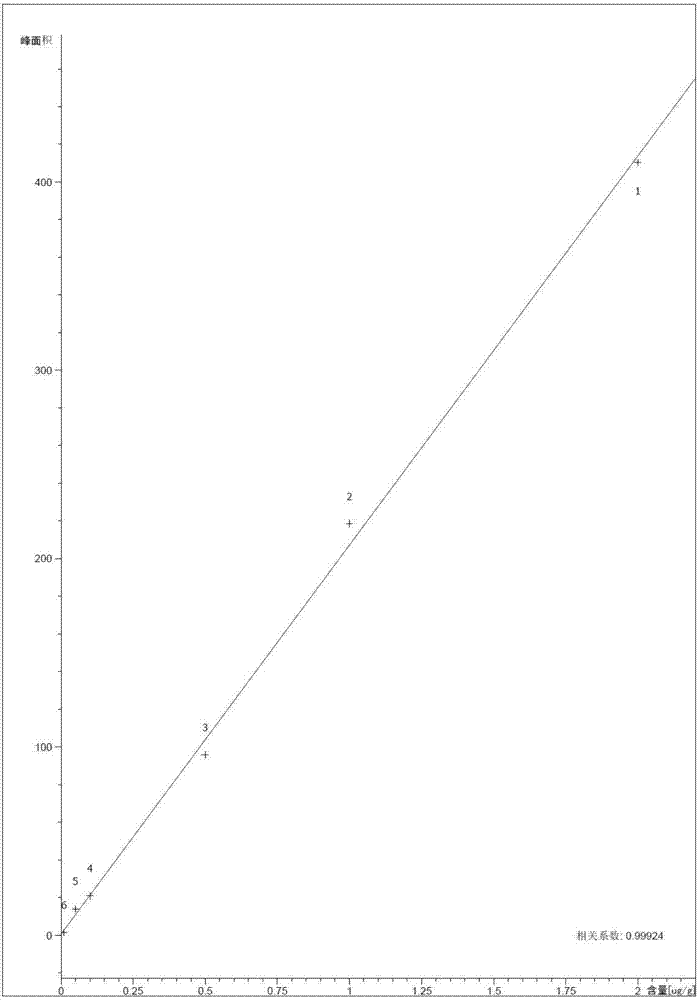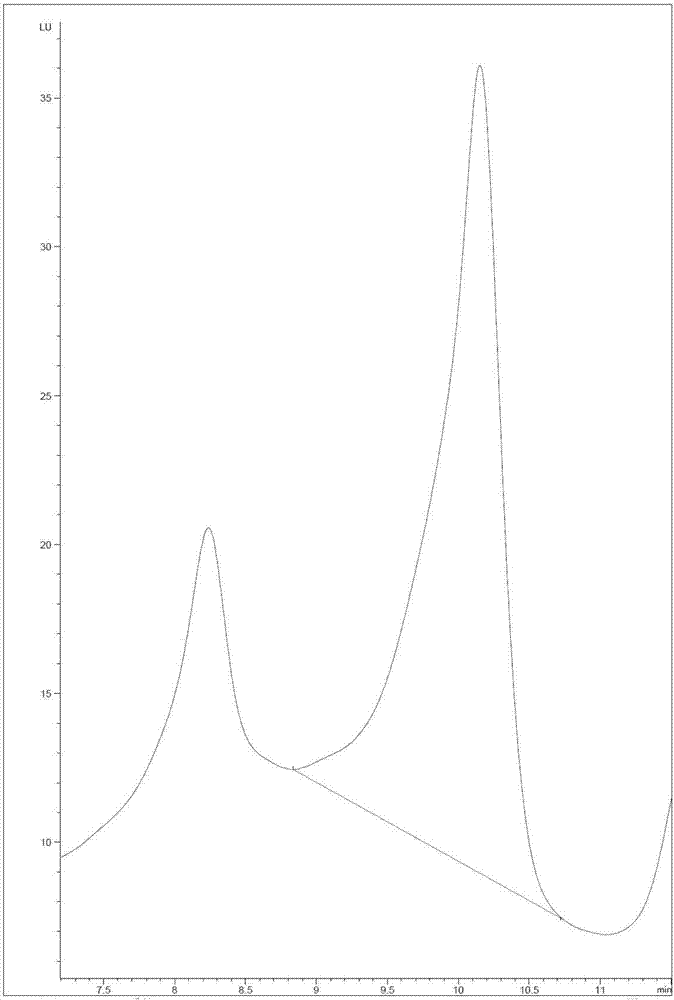Detection method of citrinin toxin in red yeast rice
A technology of red yeast rice and citrinin, which is applied in the field of detection, can solve the problems of complicated purification methods, and achieve the effects of simple extraction, high promotion and application value, and less time-consuming
- Summary
- Abstract
- Description
- Claims
- Application Information
AI Technical Summary
Problems solved by technology
Method used
Image
Examples
Embodiment 1
[0036] Citrinin toxin was extracted from red yeast rice sample A by two methods, and then quantitatively detected by HPLC. Specific steps are as follows:
[0037] 1. Utilize this method to extract citrinin toxin content in red yeast rice
[0038] Accurately weigh 1g of red yeast rice sample A that has been ground and sieved (passed through a 20-mesh sieve), put it in a 50mL centrifuge tube, add 5mL of chromatographic grade methanol, bathe in 65°C water for 60min, during this period, turn it upside down for 30s every 10min, and centrifuge at 8000rpm for 10min , stand still and take the supernatant into a 2mL micro-injection vial, use high-performance liquid chromatography (HPLC) to carry out high-performance liquid chromatography analysis on the sample liquid, and perform quantitative data processing with an external standard method. Red yeast rice sample A was repeated 3 times, and the average value was taken.
[0039] 2. Using immunoaffinity column as a control to extract c...
Embodiment 2
[0047] Embodiment 2, the detection of citrinin toxin in red yeast rice
[0048] Citrinin toxin was extracted from red yeast rice sample B by two methods, and then quantitatively detected by HPLC. Specific steps are as follows:
[0049] 1. Utilize this method to extract citrinin toxin content in red yeast rice
[0050] Accurately weigh 1g of red yeast rice sample B that has been fully mixed, put it into a 50mL centrifuge tube, add 5mL of chromatographic grade methanol, bathe in 65°C water for 60min, during this period, turn it upside down for 30s every 10min, centrifuge at 8000rpm for 10min, then let it stand and take the supernatant to In a 2mL micro-sampling vial, high-performance liquid chromatography (HPLC) was used to analyze the sample liquid by high-performance liquid chromatography, and the external standard method was used for quantitative data processing. Red yeast rice sample B was repeated 3 times, and the average value was taken.
[0051] 2. Using immunoaffinity...
Embodiment 3
[0060] Embodiment 3, the detection of citrinin toxin in red yeast rice
[0061] Citrinin toxin was extracted from red yeast rice sample C by two methods, and then quantitatively detected by HPLC. Specific steps are as follows:
[0062] 1. Utilize this method to extract citrinin toxin content in red yeast rice
[0063] Accurately weigh 1g of red yeast rice sample C that has been fully mixed, put it in a 50mL centrifuge tube, add 5mL of chromatographic grade methanol, and bathe in 65°C water bath for 60min. During this period, turn it upside down for 30s every 10min. In a 2mL micro-sampling vial, high-performance liquid chromatography (HPLC) was used to analyze the sample liquid by high-performance liquid chromatography, and the external standard method was used for quantitative data processing. Red yeast rice sample C was repeated 3 times, and the average value was taken.
[0064] 2. Using immunoaffinity column as a control to extract citrinin content in red yeast rice
[0...
PUM
 Login to View More
Login to View More Abstract
Description
Claims
Application Information
 Login to View More
Login to View More - R&D
- Intellectual Property
- Life Sciences
- Materials
- Tech Scout
- Unparalleled Data Quality
- Higher Quality Content
- 60% Fewer Hallucinations
Browse by: Latest US Patents, China's latest patents, Technical Efficacy Thesaurus, Application Domain, Technology Topic, Popular Technical Reports.
© 2025 PatSnap. All rights reserved.Legal|Privacy policy|Modern Slavery Act Transparency Statement|Sitemap|About US| Contact US: help@patsnap.com



